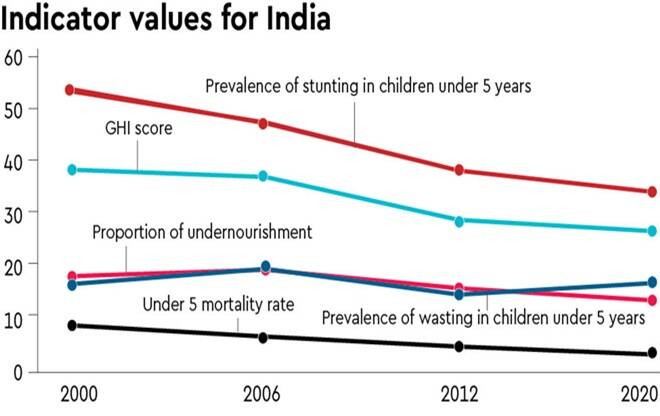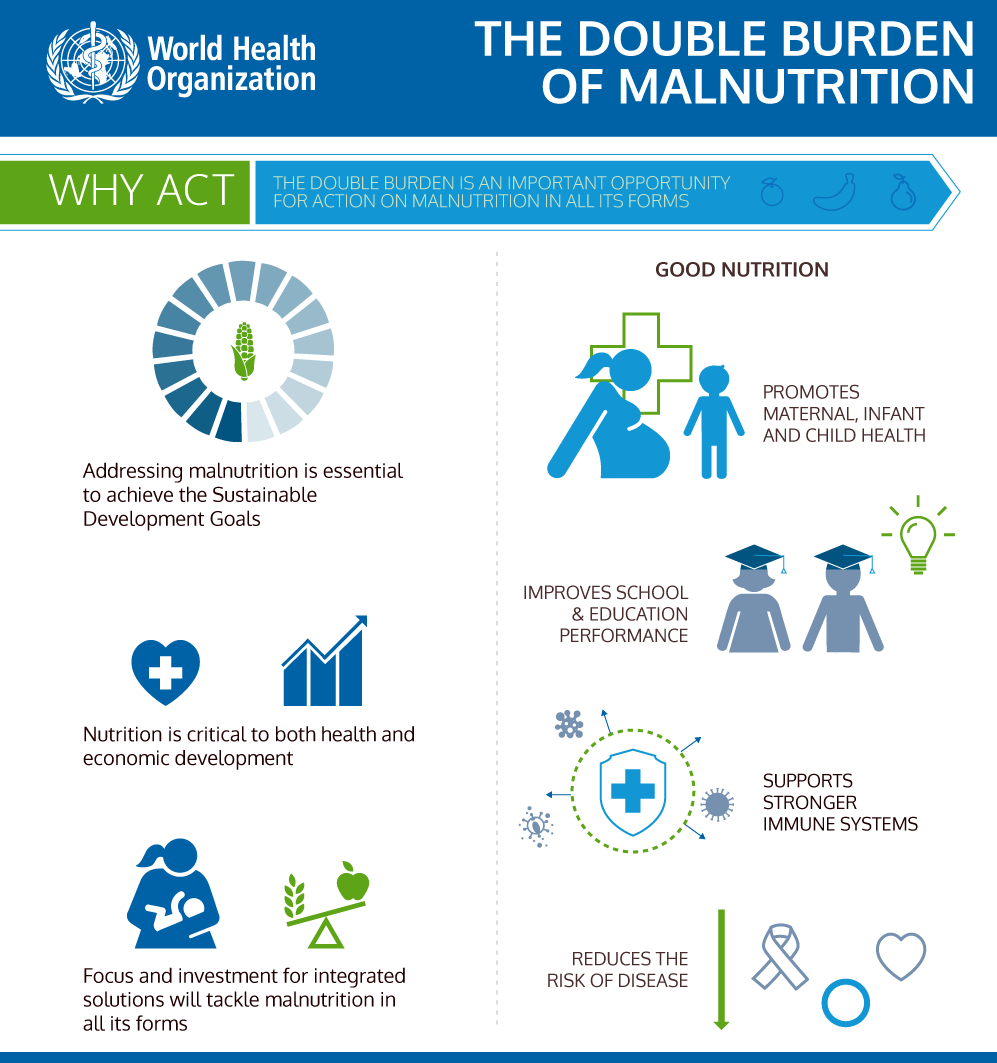Social Justice
Malnutrition, Covid-19 and POSHAN Abhiyaan
- 10 Dec 2020
- 8 min read
This article is based on “Thousand days of nutrition, and a billion dreams” which was published in The Hindu on 10/12/2020. It talks about the linkages between Malnutrition, Covid-19 and POSHAN Abhiyaan.
Recently, POSHAN Abhiyaan, the flagship programme of the Government of India has completed 1,000 days of its inception. The POSHAN Abhiyaan is a holistic approach to tackle malnutrition in India.
Under this program, the government strengthened the delivery of essential nutrition interventions so that more children have the right start in life for optimum growth, health, development and a prosperous future.
Although India has made positive strides in pursuit of addressing malnutrition, it still remains on the gravest threat that blocks the promise of young India at the foundational level. Further, Covid-19 threatens to derail the gains India has made in nutrition in more than one way.
Therefore, it is time to renew the commitment to address the menace of malnutrition.
Malnutrition in India
Malnutrition refers to deficiencies, excesses or imbalances in a person’s intake of energy and/or nutrients. It places a burden heavy enough for India, to make it a top national priority.
- According to the Comprehensive National Nutrition Survey, carried out by UNICEF, about half of all children under five years in the country were found to be stunted (too short) or wasted (too thin) for their height.
- According to a Lancet study in 2019, a staggering 68% of 1.04 million deaths of children under five years in India was attributable to malnutrition.
- The ‘Food and Nutrition Security Analysis, India, 2019 report highlights the intergenerational transmission of poverty and malnutrition in India.
- The report shows the poorest sections of a society caught in a vicious cycle of poverty and malnutrition which is passed on from generation to generation.
Vicious Cycle of Poverty and Malnutrition
- Mothers who are hungry, anaemic and malnourished produce children who are stunted, underweight and unlikely to develop to achieve their full human potential.
- The lack of nutrition in their childhood years can reduce their mental as well as physical development and condemn them to live in the margins of society.
- Children who survive malnutrition do not do as well as they could. Without necessary nutrients, their brains do not develop to the fullest.
- These disadvantaged children are likely to do poorly in school and subsequently have low incomes, high fertility, and provide poor care for their children, continuing the intergenerational transmission of poverty and malnutrition.
Impact of Covid-19 on Malnutrition
- Covid-19 is pushing millions into poverty, reducing incomes of many more and disproportionately affecting the economically disadvantaged, who are also most vulnerable to malnutrition and food insecurities.
- Also, pandemic-prompted lockdowns disrupted essential services — such as supplementary feeding under Anganwadi centres, mid-day meals, immunisation, and micro-nutrient supplementation which exacerbated malnutrition.
Way Forward
- Promotion of Infant and Young Child Feeding (IYCF) Practices: First 1,000 days from the conception of a child till the child turns two years old, marking the most crucial period for nutrition interventions in a lifecycle.
- Therefore, nutrition in the first 1,000 days will have the highest impact on the physical health, cognitive development, the academic and intellectual performance of the child.
First 1000 Days
- The first 1,000 days begins with conception as a single cell and continues through the embryonic, foetal, and postnatal periods, including infancy and toddlerhood, through a process of rapid, complex and dramatic development & differentiation.
- The major influences for this rapid physical and mental development are exerted by the genetic environment and the nurturing biological environment of nutrition.
ICYF Practices
- Initiation of breastfeeding within one hour of birth: Mother’s first yellow milk is vital for baby’s nutrition and protection against infection.
- Exclusive breastfeeding for the first six months of life: Critical for growth and development in addition to emotional bonding and protective immunity from diseases.
- Timely introduction of complementary feeding at six months of age: Gradual introduction of solid food in addition to milk-feed when most babies have acquired skills to start complementary feeding.
- Age-appropriate foods for children from six months to two years: The quality, quantity, frequency and hygiene, especially hand washing, practices are crucial factors.
- After infancy, babies start exercising increasing autonomy in the selection of foods. Wide choice of nutritious foods needs to be offered to respect their autonomy and to encourage self -feeding behaviour.
- Emulating POSHAN Abhiyan Example: POSHAN Abhiyaan succeeded in galvanising action so fast that it was led by the Prime Minister himself.
- That example must be sustained so that leadership of food and nutrition security rests with the Prime Minister at the national level, a Chief Minister at the State level, a district magistrate at the district and panchayat at the village level.
- Ensuring Holistic Development: In terms of policies, vision, strategies, India already has some of the world’s biggest early childhood public intervention schemes such as the Integrated Child Development Scheme, the mid-day meal programme, and Public Distribution System.
- India needs to ensure coverage of every single child and mother, along with 12 months of Poshan Mah (Nutrition Month), 52 weeks of breastfeeding weeks and 365 days of take-home ration.
- Multi-Stakeholder Approach: There is a need to develop a strategic, convergent action plan on nutrition-specific and sensitive areas by all stakeholders.
- Also, there is a need to retain its financial commitments for the nutrition schemes and earmark additional funds to preserve nutritional security in vulnerable communities, particularly women and children in slum areas, migrants, the population in tribal areas and districts with malnutrition rates.
Conclusion
It takes time for nutrition interventions to yield dividends, but once those accrue, they can bring transformative generational shifts. Filling in the nutrition gaps will guarantee a level-playing field for all children and strengthen the foundations for the making of a future superpower.
|
Drishti Mains Question How far India goes in realising its billion-plus dreams will be determined by how well it nourishes its children. Discuss. |
This editorial is based on “For farmers’ future: India’s big ticket dreams all hinge on reforms. Government must stay the course” which was published in The Times of India on December 9th, 2020. Now watch this on our Youtube channel.







-min.jpg)